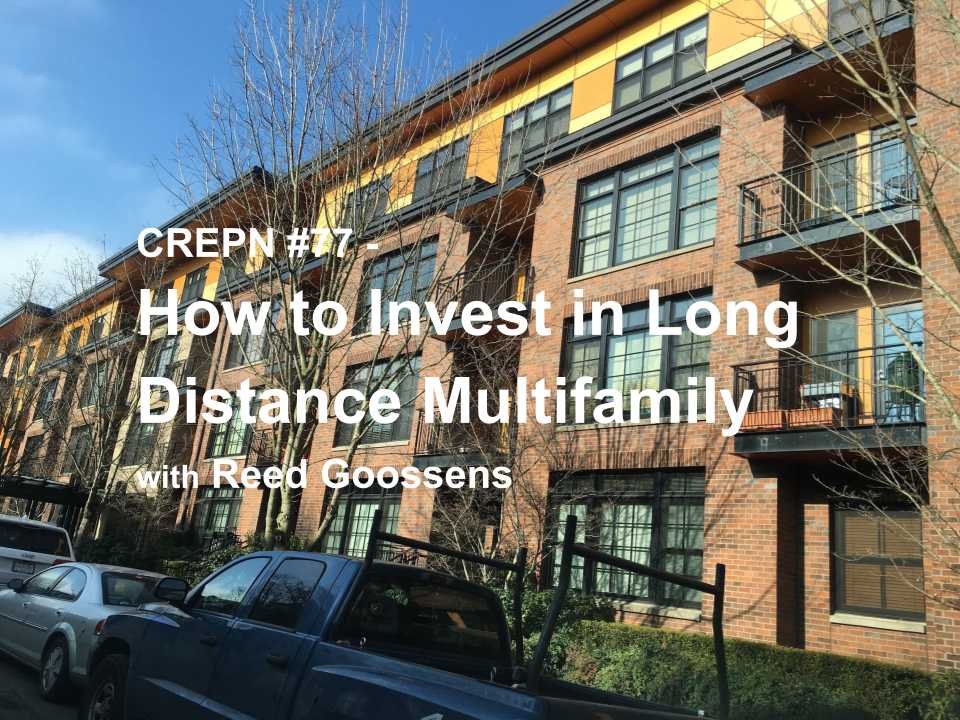
01 Oct CREPN #77 – How to Invest in Long Distance Multifamily with Reed Goossens
Successful investing in real estate takes knowledge, guts and a leap of faith. How much more is required to invest in long distance multifamily? [x_audio_embed][/x_audio_embed] If you are my Australian guest Reed Goossens from down under, it starts by moving to New York City and you get to work. Reed is professionally trained as an engineer, and has worked on several large real estate projects. It was during this work, that he recognized the developers and investors were making terrific money, and he wanted to make some too. Reed started investing in duplexes in northern New York, but knew he wanted more when a friend taught him about syndication. Confident he wanted more real estate, Reed got a mentor, and that’s when things really got interesting. Reed quickly found a 250 unit apartment property and worked with his mentor to raise the capital needed to secure this and two additional properties for a total of 846 units in under two years. Where did he find these opportunities?
What are the key indicators Reed looks for to be successful in long distance multifamily?
His engineer training provided the basic analytic skills to establish minimum requirements for his investments. Here are the starting requirements he has established that must be in place in order to proceed:- Metropolitan Statistical Area MSA must have a minimum of at least 350,000. This establishes basic population that ensures there are people that need housing.
- Population growth: a positive trend for the past ten years
- Employment opportunities of at least three major employers. Jobs for your tenants so they can pay your rent.
- Moderate CAP rates. Ideally they are 8 or greater. If CAP rates are compressed, it makes it very difficult to purchase a property with leverage.
- Rents as a percentage of average income. If rents are 25 – 30% of average income, then there is typically room to increase the rents. If rents approach 40 – 45% of average monthly income, the opportunity to increase rents is significantly reduced.

